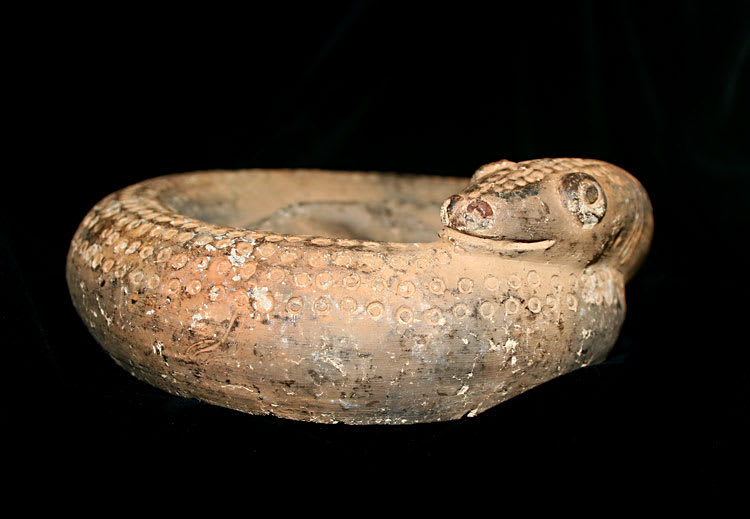Djenne Terracotta Sculpture of a Coiled Snake, 12th Century CE - 14th Century CE
Terracotta
2.125
PF.2511
Further images
Sensitive and skillful artisans in the republic of Mali sculpted this intriguing image of a ceramic-coiled snake. At the time of its creation the empire of West African Mali was...
Sensitive and skillful artisans in the republic of Mali sculpted this intriguing image of a ceramic-coiled snake. At the time of its creation the empire of West African Mali was at its zenith. The famous chronicler Ibnbattuta, a Berber theologian from Tanger who spent a year in Mali, writes that he was overcome with amazement over the wealth of the Mansamusa court of Mali, whose splendor at the time was equal only to that of the Mongol empire. Djenne, one of the prospering cities at that time, also reaped the bounty of the rivers Nile and Bani, since it was strategically located at the confluence of these two waterways. An accessible and plentiful gift of the rivers was the ceramic grit, a material that was worked by local artisans in a skillful and creative fashion. The result of these efforts was the creation of terracotta sculptures that are truly distinguished in the world of ceramic art. Here we see a fascinating example of the Djenne artistry in this image of a coiled snake. With a long body wrapped gracefully around it, the snake rests his head atop his tail in a relaxing posture pose that belies his normally vigilant nature. Snakes were venerated in the Mali culture, used in the cult of ancestors as well as being linked symbolically with the idea of relative mortality. This serpentine work of art reflects that respect and admiration through a combination of bold imagery and a sensitive spirit.





